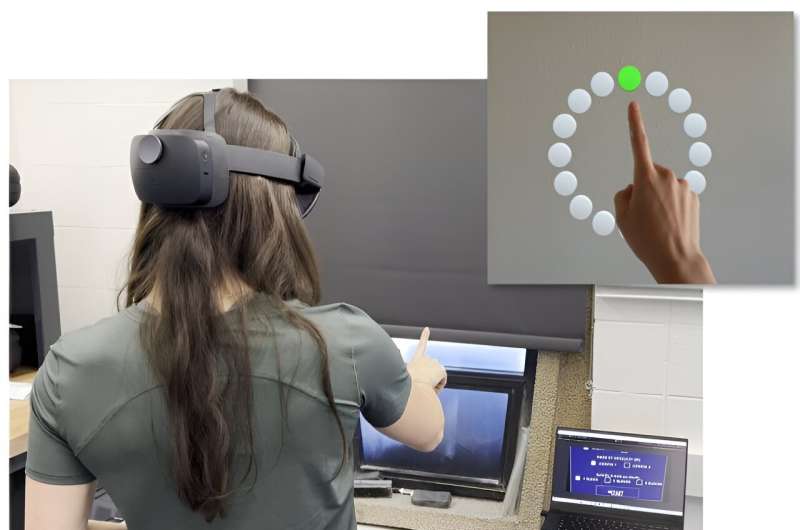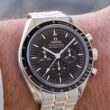Augmented Reality Astronaut Adaptation
Getting a Grip on Gravity: How Augmented Reality is Evaluating Astronaut Adaptability
The study of space travel poses particular difficulties for human biology. Astronauts’ bodies change significantly when they travel from the weightless environment of space to the gravity-rich planets like Mars or the Moon. This blog explores a novel approach that uses augmented reality (AR) technology to gauge how well astronauts are adjusting to these variations in gravity.
The Gravity Dilemma: Space Travel’s Difficulties
Augmented Reality Astronaut Adaptation
The human body has a major challenge when transitioning from the weightlessness of space to the pull of gravity on planetary planets like Mars. During and during space missions, astronauts undergo a variety of physiological and cognitive changes, including:
Table of Contents

Physiological Alterations: Being in microgravity causes
- Loss of bones and muscles: Because space travels beyond Earth’s gravitational pull, astronauts experience a decrease in bone density and a progressive atrophy of their muscles.
- Cardiovascular deconditioning: The heart finds it difficult to return to the demands of gravity after adjusting to a reduced effort in microgravity.
- Sensory disturbances: Due to the changed sensory input in space, astronauts may have balance problems, vertigo, and spatial disorientation.
- Cognitive Deficits: Research has indicated that astronauts may have reductions in:
- The capacity to comprehend and navigate one’s physical surroundings is known as spatial orientation.
- Memory: The inability to recollect details and create new memories.
- Attention: A diminished capacity for concentration and focus.
To guarantee astronaut health and the success of the mission, these difficulties call for efficient monitoring and assessment systems.
Conventional Evaluation Techniques: Drawbacks and the Need for Innovation
Augmented Reality Astronaut Adaptation
In the past, evaluating astronaut adaptation was based on:
- Laboratory-based experiments: Performed both prior to and following missions, these tests provide limited understanding of real-time modifications made during spaceflight.
- Self-reported information: Astronauts record symptoms and sensations, which can be biassed and subjective.
These approaches have drawbacks, which emphasises the need for creative fixes.
Step forward augmented reality: a space assessment game-changer
Augmented Reality Astronaut Adaptation
Augmented Reality (AR) technology offers a novel platform for astronaut assessment by superimposing digital information onto the physical world. Here’s where AR excels:
Real-time and Objective Data: Augmented reality (AR) can build virtual worlds in which astronauts carry out mission-specific duties. Scholars are able to impartially assess their performance, offering useful information about their:
Motor skills: Measuring dexterity, balance, and coordination.
Augmented Reality Astronaut Adaptation
- Cognitive function: Assessing the capacity for memory, focus, and decision-making.
- Analysing spatial orientation and vision is part of sensory perception.
- Gathering Information While in Flight: On-board spaceship AR assessments are possible, offering the following benefits: Constant observation of astronaut adaptation during the voyage.
- insights into the way modifications change throughout time.
- Customised Assessments: Augmented Reality experiences can be tailored to meet the demands of individual astronauts and target particular functions. This tailored strategy makes possible:
More precise evaluations
Augmented Reality Astronaut Adaptation
creation of focused training initiatives to address particular problem areas.
Enhanced Ecological Validity: When compared to conventional lab settings, augmented reality simulations provide a more accurate depiction of the environment astronauts will face. Enhances the applicability of evaluation outcomes.
makes it possible to better prepare for the real mission conditions.
An Overview of the Future: AR’s Possibilities for Space Travel
Augmented Reality Astronaut Adaptation
Although the use of augmented reality to evaluate astronaut adaptability is still in its infancy, it has enormous potential for space exploration’s future:
- Real-time Monitoring: By keeping a close eye on astronaut health and performance, proactive interventions and prompt mission plan modifications will be possible as needed.
- Personalised Training: Training regimens designed with each person’s requirements and current data in mind can greatly increase astronaut readiness and mission success.
- Assessment of Countermeasures: Augmented Reality (AR) can be employed to assess the efficacy of current and proposed countermeasures against the impacts of altered gravity, resulting in the refinement of astronaut health and well-being protocols.
- Future Mission Planning: The knowledge acquired from AR assessments can help shape the design of spacecraft and mission planning in the future, resulting in the best possible conditions for human spaceflight.
Augmented Reality Astronaut Adaptation
We can create a future where space flight is not only possible but also carried out with the utmost care for the health and well-being of individuals who are brave enough to leave the boundaries of our home planet by utilising the creative potential of augmented reality technology. AR provides a potent tool to overcome the difficulties presented by gravity and guarantee a safe and successful voyage for astronauts stepping into the great unknown as the bounds of human exploration continue to grow.



technology AR changing world